Photo
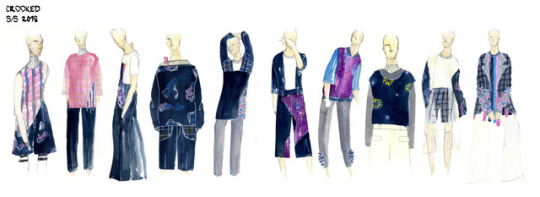

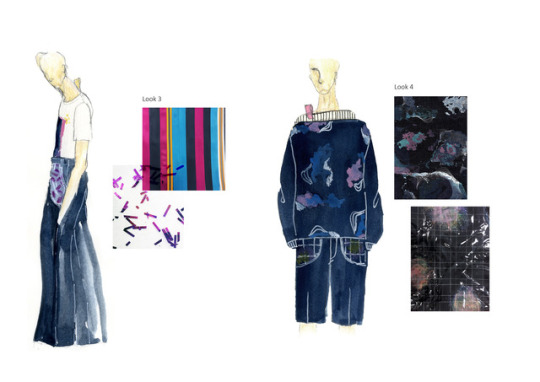
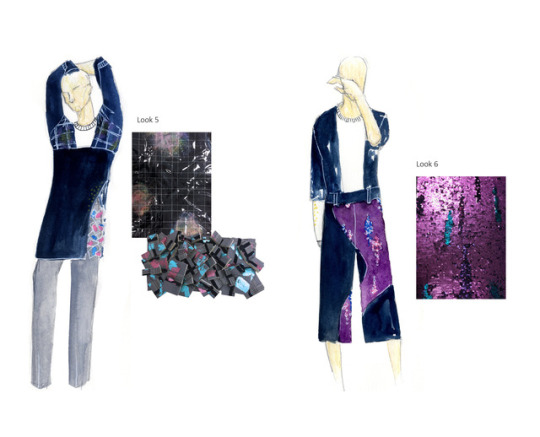
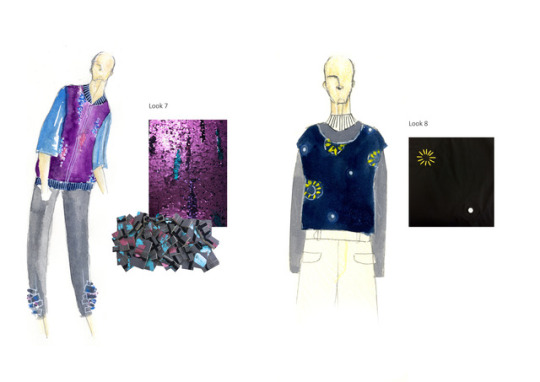
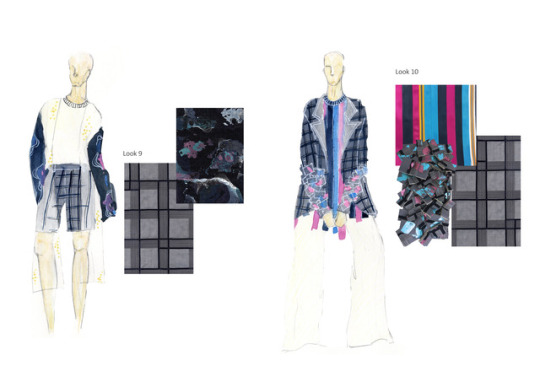
CROOKED S/S 2018
This is the final line-up of CROOKED S/S 2018.
All textile manipulations included in the collection are placed next to each design separately.
Annotation and textile sample taken from personal sketchbook
(click images and zoom in for higher quality pictures)
0 notes
Photo
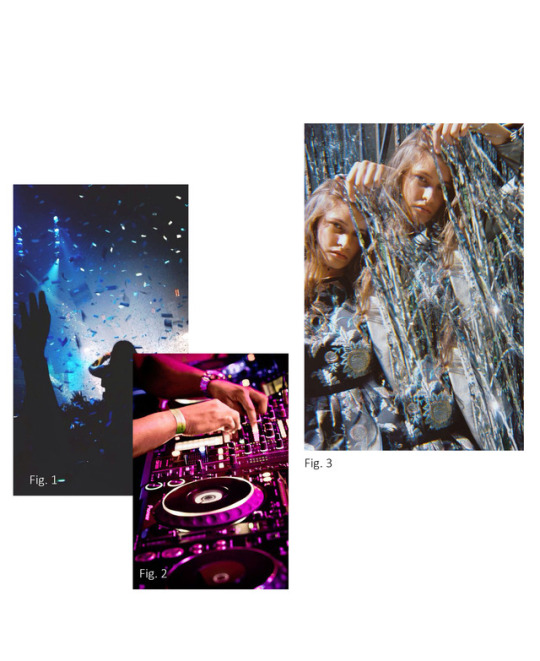
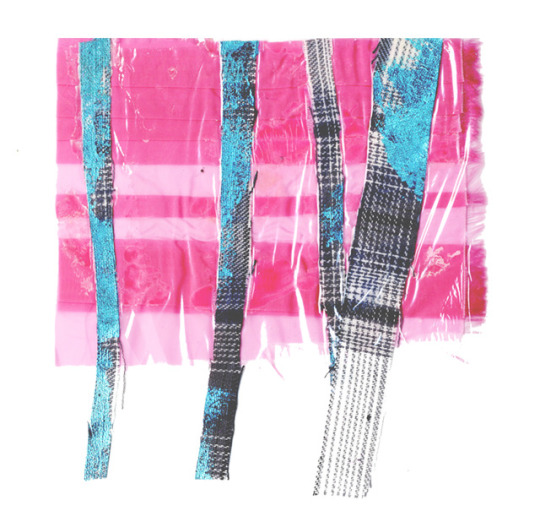
This textile piece is a cross-reference between few different inspirations. The first inspiration is the festival confettis, which is translated into the aqua blue foiling. The second inspiration is as seen in Fig. 2, is the pinkish lighting that hits the dj spin table. This inspires the horizontal pleats on pink nylon fabric as dj spin table has a pitch-adjuster function that looks like vertical movable bars which is usually placed next to the vinyl player. Fig. 3 inspires me in making the textile piece as the long confettis were hold by that certain way, giving a fringe effect to it.
The textile is a combination between horizontal random knife pleats and fused-halfway cotton wool stripes with aqua blue foils on them. The combination between two striking colours - aqua blue and fluorescence pink compliment each other as well as they clashes each other.
Credit:
Fig. 1 : http://ilove2banggg.tumblr.com/post/68502803607
Fig. 2 : http://djsetforsale.com/vinyl-2/
Fig. 3 : https://www.urbanoutfitters.com/sale#/
Annotation and textile sample taken from personal sketchbook
(click images and zoom in for higher quality pictures)
0 notes
Photo
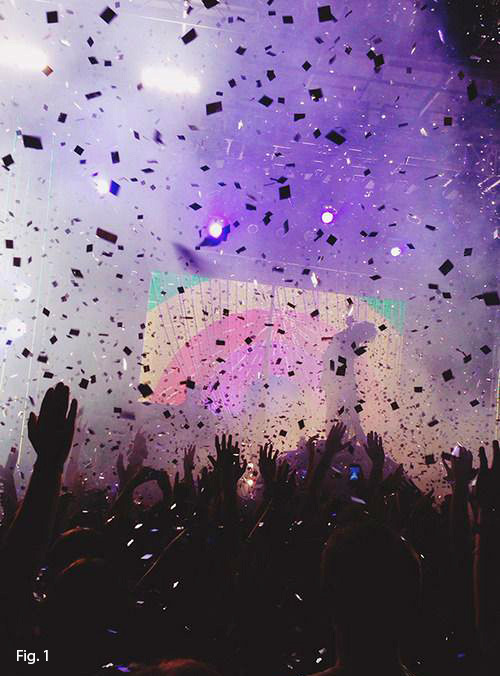

This textile manipulation is rather simple compared to the rest, but it is created to fit a garment that is meant to be an outerwear. It is inspired solely from confettis, and one of this piece’s main element is actually real confettis.
The process of making this textile manipulation requires two PVC plastics with two different thickness - one being thinner than the other. Sandwich the confetti pieces between them and iron them flat. The tricky part would be adjusting the heat of the iron to the perfect temperature as over-heating would caused them to melted.
Its transparency would compliment any inner top or shirt worn, yet the confettis pattern add a kick to the whole look with its shine.
Credit:
Fig. 1 : http://www.bronsonsnelling.com/post/58837476535/the-flaming-lips-x-bronson-snelling
Annotation and textile samples taken from personal sketchbook
(click images and zoom in for higher quality pictures)
0 notes
Photo
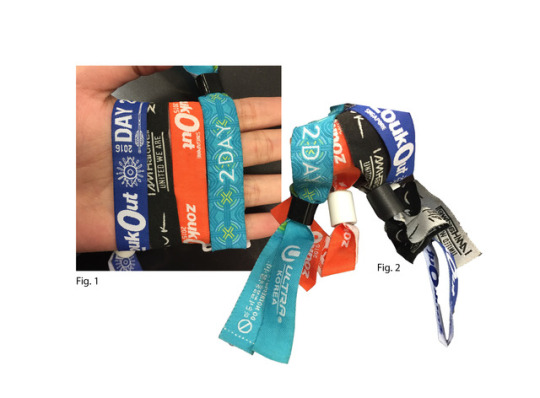
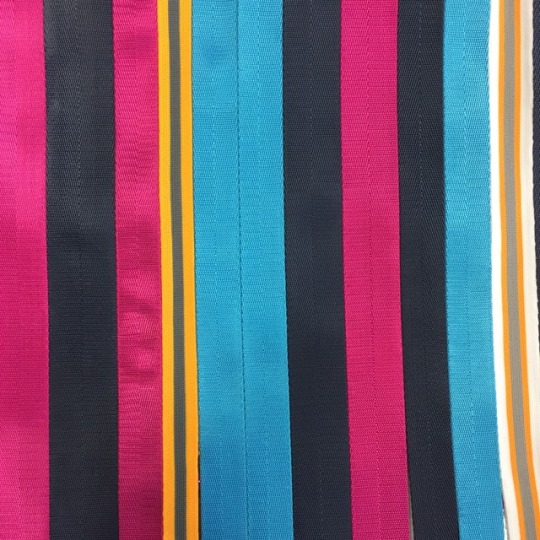
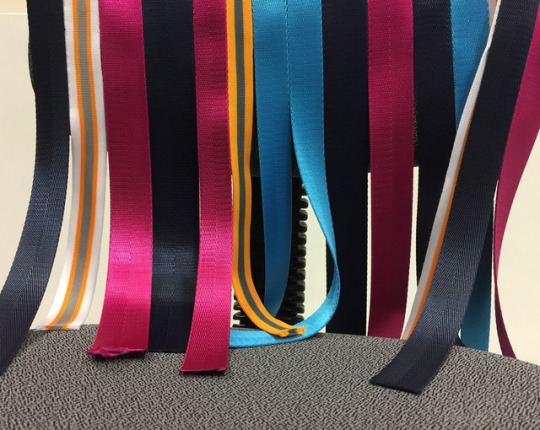
In every EDM festival, there will always be a bracelet given to people as a sign that they are a part of the festival or they have purchased the ticket. The bracelets are usually come in vibrant colourful ribbon strips.
This textile manipulation is inspired by those bracelets and how each EDM festival usually has their own signature bracelet colour. I blind-stitched the ribbon polyester strips and ribbon cotton jersey strips piece by piece with hand, leaving few inches unstitched hence it looks like fringes that is also a part of the EDM bracelet element. (refer to Fig. 2)
Credit:
Fig.1 : Original photo taken by Natasha Nadya
Fig. 2 : Original photo taken by Natasha Nadya
Annotation and textile sample taken from personal sketchbook
(click images and zoom in for higher quality pictures)
0 notes
Text

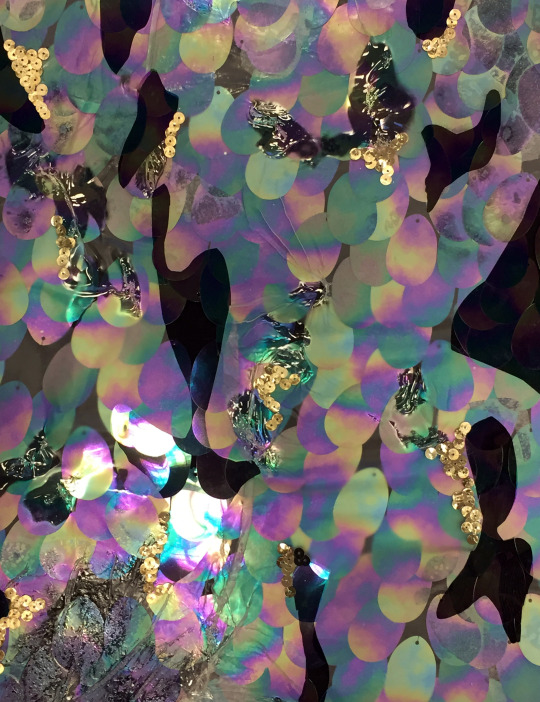
A post shared by Natasha Textile Portfolio (@natashanadya_uel) on Apr 17, 2017 at 3:00am PDT
A post shared by Natasha Textile Portfolio (@natashanadya_uel) on Apr 17, 2017 at 3:01am PDT
The concept behind the textile manipulation above is the translation of how lights hit the disco ball. It causes bokeh in most cases, which in photography term means a blur effect in the out-of-focus parts of an image. It is created by combining two layers of different fabric - sequin and melted TPU. Gold sequins are also added randomly to add colour variety on the “bokeh” effect.
It is, however, a textile manipulation that would be viewed better with a little movement, as it represents disco ball that got hit by the lights. As disco ball keeps moving or rotating, this textile piece has also the same colour changing effect that disco ball has when it is moved. (refer to the videos)
Credit:
Fig. 1 : https://www.thereformation.com/dresses
Annotation and textile sample taken from personal sketchbook
(click images and zoom in for higher quality pictures)
0 notes
Photo
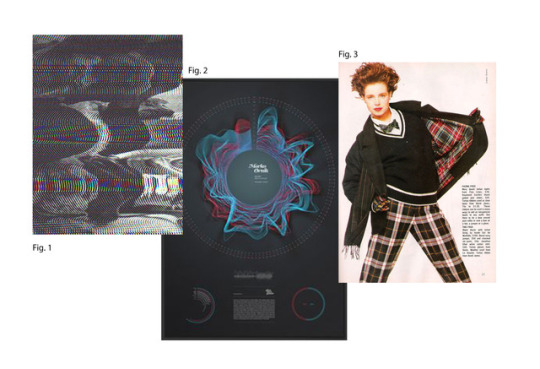
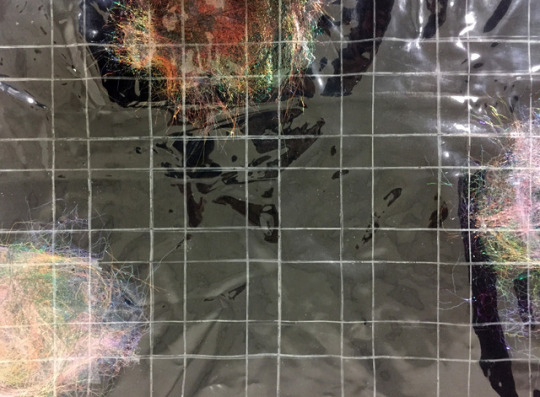
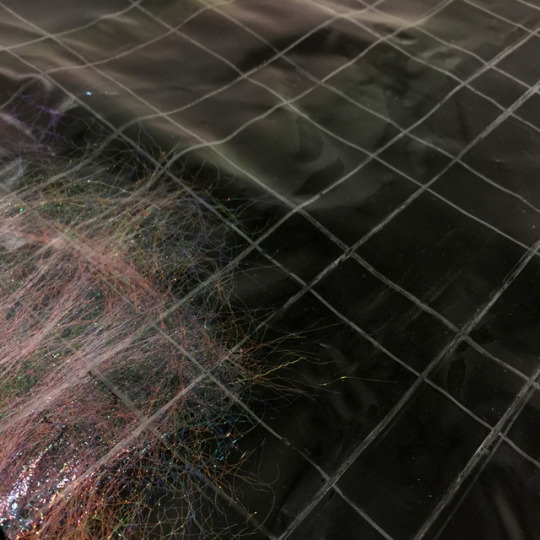
Music and sound are two things that do not have physical forms, and they are things that are not even visible. In this textile manipulation I experimented with how music would look like if it was visible and how its physical appearance has been portrayed currently.
I took inspiration from Fig. 1 and Fig. 2, as they are how music’s physical appearance has often been seen as. Combining two layers of fabrics together (cotton and PVC plastic), I inserted what is known as Angelina fiber (polyester) between them. The Angelina fiber is shaped accordingly to look like Fig. 2.
White lines that represent the checkered prints are also added on the PVC plastic to cross-reference the two ideas of music and 80s fashion.
Credit:
Fig. 1 : http://www.linnwie.com/Scanning-experiments
Fig. 2 : https://connect.etapes.com/en/braindance
Fig. 3 : http://glossysheen.blogspot.sg/2011/02/dolly-magazine-february-1985.html?m=1
Annotation and textile sample taken from personal sketchbook
(click images and zoom in for higher quality pictures)
0 notes
Photo
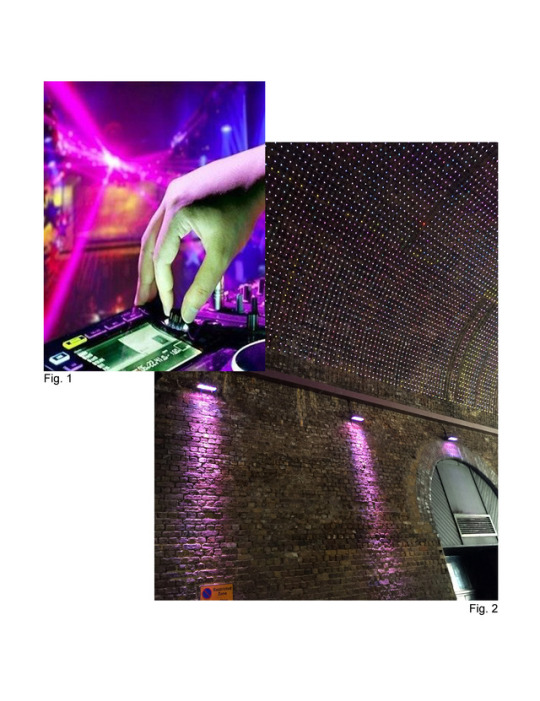
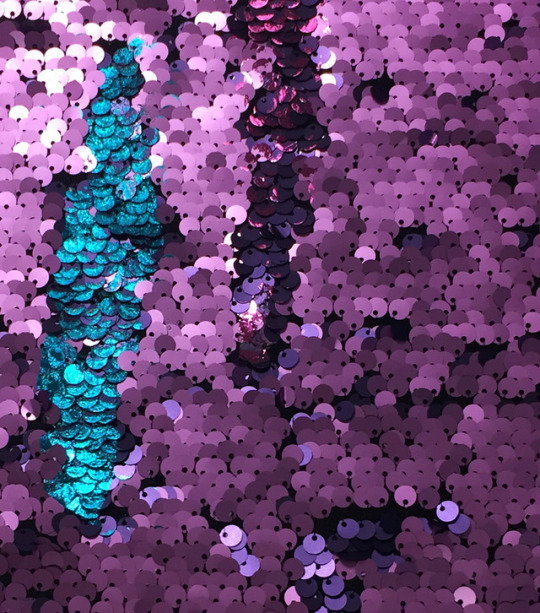
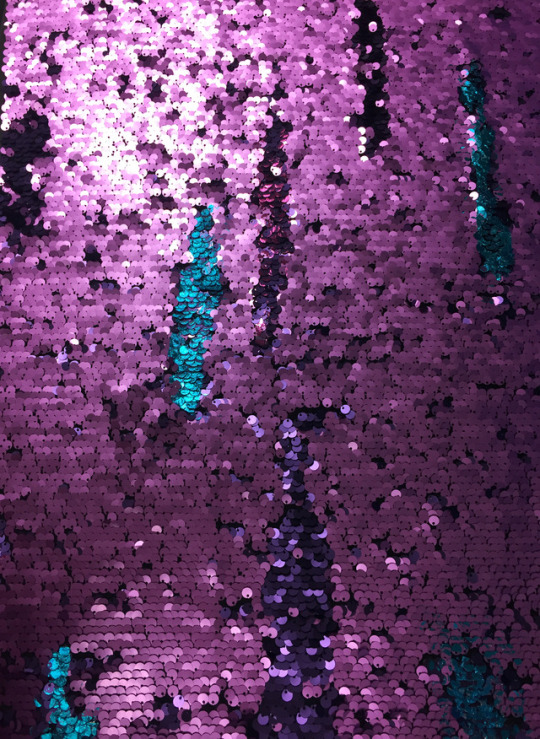
The inspiration for this sequin textile is taken from the lighting seen in nightclubs. The colourful lights and lasers that fall on textured walls are complementing the music playing to evoke a certain mood or vibe. As seen on Fig. 2, this light-on-brick-wall visual inspire me to do the manipulation on a textured base, therefore I chose the sequined fabric.
The sequin fabric base works two-ways, meaning that the two sides of the sequins have different colours. Following the Fig. 2 visual, I flipped some part of the sequin onto the other direction in random patterns, foiling it with blue foils to represent the lights.
Credit:
Fig. 1 : https://www.pinterest.com/pin/438256607472539306/
Fig. 2 : Original photo taken by Natasha Nadya
Annotation and textile sample taken from personal sketchbook
(click images and zoom in for higher quality pictures)
0 notes
Photo
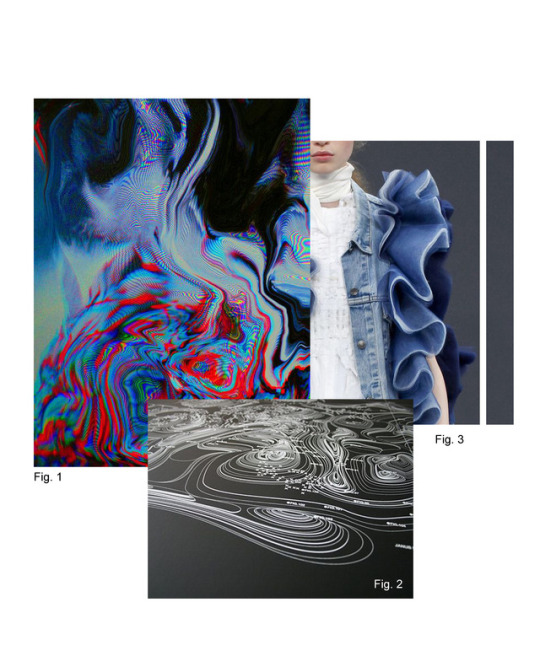

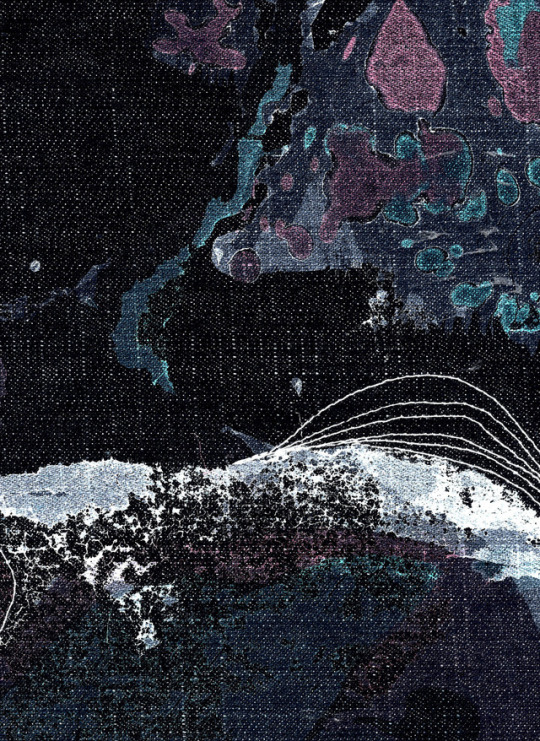
Despite most people translating sound waves as ruffles (Fig. 3), I tried to turn it into 2D textile manipulation. For this textile, I merged the idea of sound waves and psychedelic or ‘trippy’ emotion or feeling when audiences are listening to certain EDM genre while consuming alcohol; for example dubstep and trance music. Psychedelic feeling or emotion is represented by organic shapes that layers themselves in few different colours (as shown in Fig. 1). Fig.1 is an example on how people saw lights and lasers on EDM festival when they are drunk or presumably on drugs.
The technique applied is marbling on textured denim fabric randomly. From the marbling result, free machine-stitching is applied to reassemble the shape of sound waves echoing.
The colours used on the marbling and sewing thread are still within the colour scheme of the collection.
Credit:
Fig. 1 : http://otakugangsta.com/post/52755208436
Fig. 2 : http://blog.transceiverfreq.com/post/157315096944
Fig. 3 : https://www.pinterest.com/pin/438256607474014192/
Annotation and textile sample taken from personal sketchbook
(click images and zoom in for higher quality pictures)
0 notes
Photo

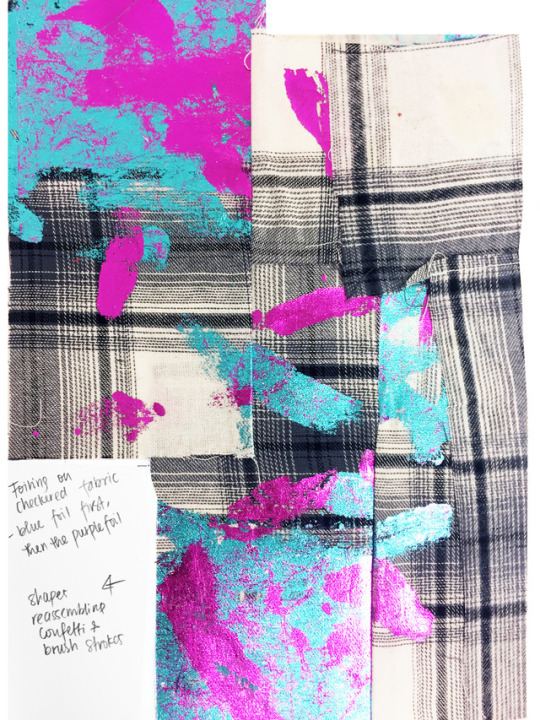
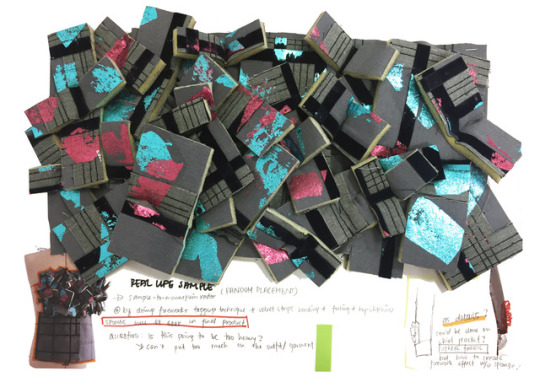

Plaids, sparkles, and enthusiasm are the key focuses on these textile manipulations. The concept is to recreate the colourful light-play, confettis, and the emotions evoked when EDM is played at the venue, as shown in Fig. 3 and Fig. 4.
The first image of the textile manipulation is done by foiling the turquoise-coloured foil on PVC leather and pile it with the fluorescence pink foil by bonding it on top. The peeking effect of the blue through the pink foil is achieved by controlling the placement and the amount of sticking adhesive (I used bonding web). Hence, it creates a cracking effect on the foiling as only some part of the blue foil surface has bonding web/glue on it.
On the second textile sample, I tried to be more experimental. So instead of just using a flat fabric as the base, I cut the checkered fabric to random rectangular shapes and sew them back together, creating the broken lines illusion. Plaid is known as one of the key prints from 1980s, as shown on Fig. 1 and Fig. 2, which are taken from 1980s fashion photographs. The shapes and placement of the foil are more random and it rather reassembles confetti pieces that are released on EDM events. It is interesting as it put a twist on an original checkered prints by adding metallic colours to it. I feel that this textile is successful on achieving the collection’s concept; to combine the 1980s (plaids) with the current EDM (metallic foils) yet still able to maintain the vintage vibe of checkered prints.
The third textile manipulation is basically a development of the second textile manipulation. Rather than applying the foil on plaid-printed fabric, I did the checkered pattern by myself by bonding fabric strips on the grey fabric and sticked the foils on it (refer to the previous blog post). I want to reflect the feeling of being excited and enthusiastic, therefore I got this idea of doing 3D spikes as a reflection of those bursting emotions. What I did was bonding the plaid-foiled fabric to a thin sponge*. Thenceforth, I cut them into random-sized rectangulars, stacked them and machine-stitched them to “press” the sponge so it could achieve the V 3D-pop up effect.
*In the sample, the sponge was yellow-coloured, but it would be grey-coloured in the real garment.
Credit:
Fig.1 : http://glossysheen.blogspot.sg/2011/02/dolly-magazine-february-1985.html
Fig. 2 : https://www.pinterest.com/steelemystyle/loving-80s/
Fig. 3 : http://www.justicedance.co.uk/Hair-Accessories---Hair-Gems.html
Fig. 4 : https://www.pinterest.com/pin/178314466472376858/
Annotation and textile samples taken from personal sketchbook
(click images and zoom in for higher quality pictures)
0 notes
Photo

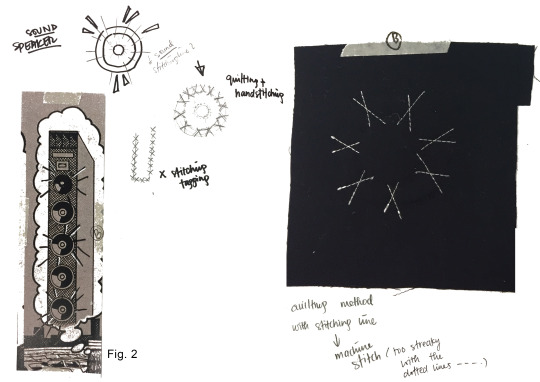
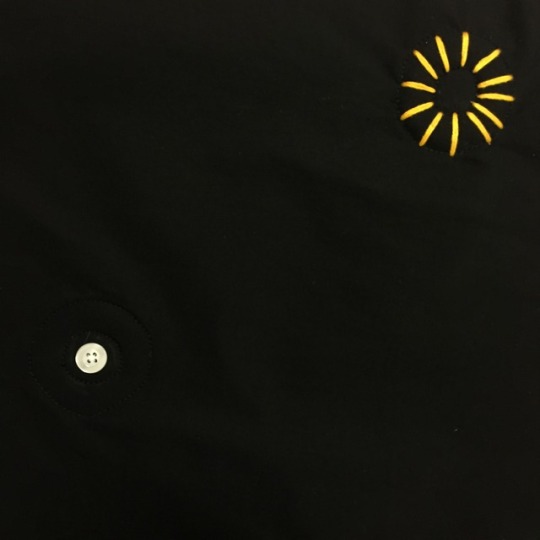

When people talk about music, the word “speaker” would automatically be associated with it. Music without speaker is like human wanting to say something without having mouth to voice them out.
The idea of this textile is to furbish the shape of sound speaker and how it vocalise musics to the audience. The idea came about when I tried to draw stripes (that represent sounds) around images of speakers.
First I tried to recreate sound speaker shape itself without the line (sound) effect around it. I did it by doing quilting in circle shape and hand-stitched a button in the middle of it. The second try is by doing the same quilting technique but I added hand-stitch embroidery in tidy manner on top of the quilting. (refer to Textile Manipulation A photo)
The second try is by doing the same quilting technique but instead of hand-stitching it, I used sewing machine to sew abstract white stitch line on it. (refer to Textile Manipulation B photo)
The visible stitching line/embroidery thread used in the actual garments would not be white in colour and I notice that I would need to add one more layer of the foam to create a more 3-dimensional quilting effect. (Fig. 4 is a sample that I did on garment’s sleeve)
Credit:
Fig. 1 : http://tommorrow--land.tumblr.com/post/147229685840/we-are-ravers-rave-republic-sensation-white
Fig. 2 : http://psychedelicway.tumblr.com/post/100903740537
Fig. 3 : https://www.google.com.sg/search?q=speaker&espv=2&biw=1280&bih=726&site=webhp&source=lnms&tbm=isch&sa=X&ved=0ahUKEwj6jIn67IrSAhXKtI8KHSQaC0AQ_AUIBigB#imgrc=EA5oU70tCHjMCM:
Fig. 4 : Original photo taken by Natasha Nadya
Annotation and textile samples taken from personal sketchbook
(click images and zoom in for higher quality pictures)
0 notes
Photo

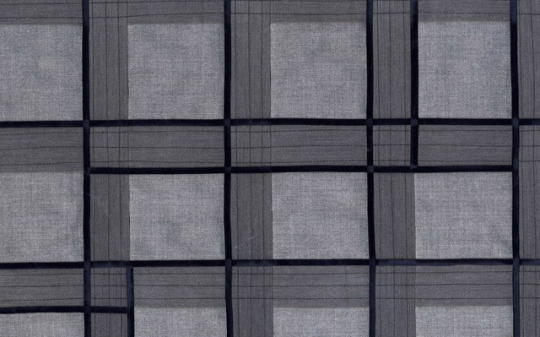



Checkered print or plaids is known to be one of the biggest trends of the 80s fashion. This textile manipulation is done by recreating something that has been seen as something familiar by the crowd with a new technique. Instead of making a flat 2D print, I created a 3D checkered print by laser-cutting dark blue velvet and lemon yellow cotton to 0.5 cm strips and fusing them on top of the top-stitched grey fabric strips.
By doing this technique, I managed to recreate plaids with a unfamiliar technique and give plaids different interesting textures as they are made from few different types of fabrications.
Credit:
Fig.1 : http://glossysheen.blogspot.sg/2011/02/dolly-magazine-february-1985.html
Fig. 2 : https://www.pinterest.com/steelemystyle/loving-80s/
Fig. 3 : http://glossysheen.blogspot.sg/2011/02/dolly-magazine-february-1985.html?m=1
Fig. 4 : http://glossysheen.blogspot.sg/2011/02/dolly-magazine-february-1985.html?m=1
Annotation and textile samples taken from personal sketchbook
(click images and zoom in for higher quality pictures)
0 notes
Photo


Inspired by sound waves movement and wavy bumps, I tried to create textiles that embody these qualities. I was thinking on how to apply sound wave as a form of textile manipulation aside from applying them as digital prints. Rib knit’s lines reminded me of the Fig. 1 image’s lines, hence I chose the rib knit to explore this idea.
I created this piece by stretching the rib knit and sewing a few lines side by side. While stretching the fabric, it came together in a pipe shape and the sewing machine began to stitch them together, creating the small pipes in the middle of the fabric while at the same time creating the 3D wave effect.
It is a subtle textile manipulation and would be suitable to be applied on hem, neck lines, and sleeves.
Credit:
Fig.1 : http://designspiration.net/image/29780010255396/
Annotation and textile sample taken from personal sketchbook
(click images and zoom in for higher quality pictures)
0 notes
Photo


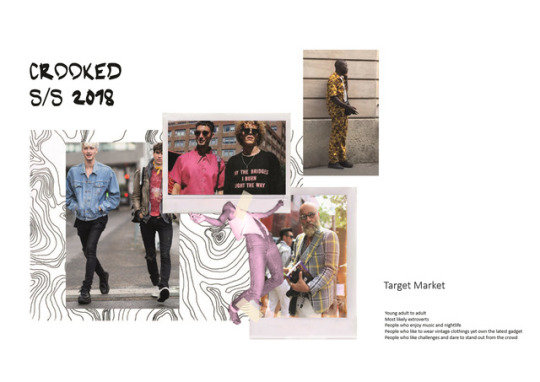
Inspired from electronic dance music or EDM, a lively and loud music genre, this Spring/Summer 2018 collection would be a sporty streetwear menswear collection with a hint of sartorialism in it. Music has never been able to be portrayed as solid object, makes it challenging for design elements to be extracted from.
Hence, it is very crucial to do in-depth research and to make full use of mind-mapping which so far has resulted on 1980s era as the root of EDM. The main concept of this collection is to combine the contrasting elements of 1980s and the current EDM. It can also be seen as creating a contemporary and modern touch on the 1980s fashion.
(click images and zoom in for higher quality pictures)
1 note
·
View note